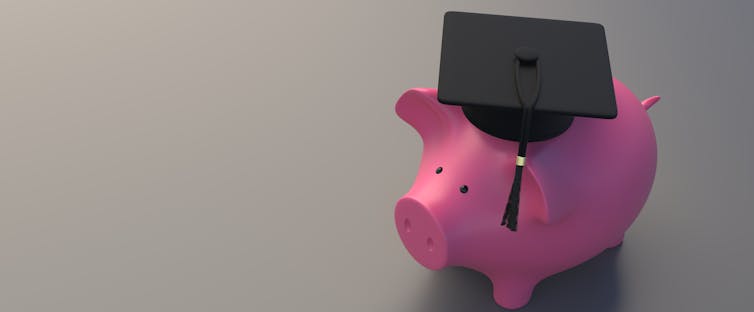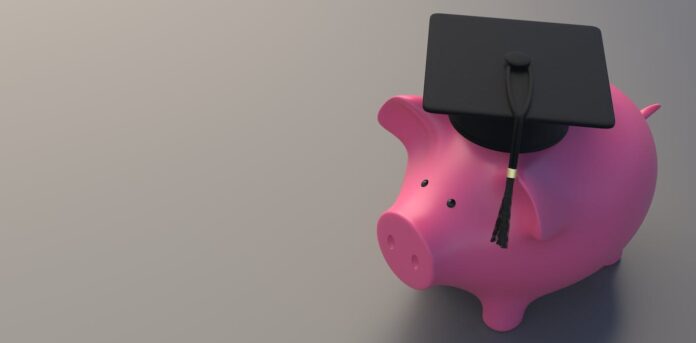Government and nonprofit workers are getting billions in student loan debt canceled through a public service program

By William Chittenden, Texas State University
The Public Service Loan Forgiveness program, which the George W. Bush administration created in 2007 to encourage people to work for the government and nonprofits, has grown significantly during Joe Biden’s presidency. The Conversation asked economist William Chittenden to explain what this student loan program is, who is eligible and what has changed lately.
How does the Public Service Loan Forgiveness program work?
To qualify, borrowers must currently work for the government or a nonprofit.
Americans getting this debt relief include many nurses, teachers, first responders, Peace Corps volunteers and social workers.
Once enrolled, borrowers can have their remaining student loan balance forgiven if they remain employed in public service and make 10 years of monthly on-time payments.
The government can cancel only the balance of the direct loans the Department of Education makes through this program. Any student debt that borrowers owe private lenders remains outstanding.
Why are many more loans being forgiven now?
Borrowers began to apply in 2017, after the requisite decade of on-time payments, for their remaining balances to be forgiven. However, nearly all of these applications were rejected – about 98% of them.
The vast majority of these denials were due to technicalities. Many borrowers felt cheated after holding up their end of the deal but still finding themselves burdened with debts they didn’t believe they should have to repay. Some of them filed a class-action lawsuit, which the Biden administration settled in 2021.
Recognizing these concerns, the government streamlined and overhauled the Public Service Loan Forgiveness program.
The Department of Education announced several important changes in 2021. The federal government expanded the types of loans that are eligible for forgiveness and gave borrowers a way to get credit for past payments.
However, most student loan borrowers did not see the impact of this change until October 2023, when student loan payments resumed for other borrowers after being paused starting in March 2020 because of the COVID-19 pandemic.
How much debt has been forgiven so far?
An estimated 750,000 Americans have gotten US$53.5 billion in student debt erased through this program. That’s more than one-third of the roughly $132 billion in student debt relief the Biden administration says it has approved through late 2023 for 3.6 million borrowers, through several programs.
But the deleted debt has chipped less than one-tenth of the total outstanding debt off the government’s ledgers. About 43.6 million Americans owe a total of $1.64 trillion in federal student loan debt. Some of the Biden administration’s efforts to cancel larger chunks of this debt have failed because of legal challenges that went all the way to the Supreme Court.
The total amount of student debt, including both the federal and private varieties, declined slightly in the second and third quarters of 2023 because the value of the student loans paid off or forgiven exceeded the value of new student loans being issued.
There is currently no expiration date for the Public Service Loan Forgiveness program. However, some borrowers have only until Dec. 31, 2023, to try to consolidate their student loans so they can qualify for this program and some other kinds of student loan forgiveness.
What about people in college now or going soon?
Current and future college students will also be able to apply to the program if they embark on public service careers.
There are also several income-driven repayment plans that student loan borrowers can apply for. The monthly student loan payment under these plans is typically between 5% and 20% of the borrower’s monthly discretionary income, depending on the specific plan.
Any remaining loan balances will be forgiven after 20 to 25 years of on-time monthly payments. People who participate in an income-driven repayment plan can also apply to the Public Service Loan Forgiveness program.
An estimated 855,000 borrowers currently qualify to have $42 billion in loans forgiven based on making their student loan payments for the past 20 years.
What else is going on with student debt forgiveness?
Over the past few decades, many Americans took out student loans to attend a college or technical school that defrauded them. Others took out loans to enroll in schools that went out of business before those borrowers could complete their degrees. The Biden administration has made it easier for these people to have their loans canceled through the borrower defense to repayment program.
And the Biden administration has canceled $11.7 billion in debt owed by almost 513,000 borrowers with a total and permanent disability.
In addition, many borrowers have loan balances that have grown to a sum that exceeds what they originally borrowed. And there are Americans who have been paying on their student loans for at least 25 years. The Department of Education is also considering making these former students eligible for loan forgiveness.![]()
William Chittenden, Associate Professor of Finance, Texas State University
This article is republished from The Conversation under a Creative Commons license. Read the original article.



